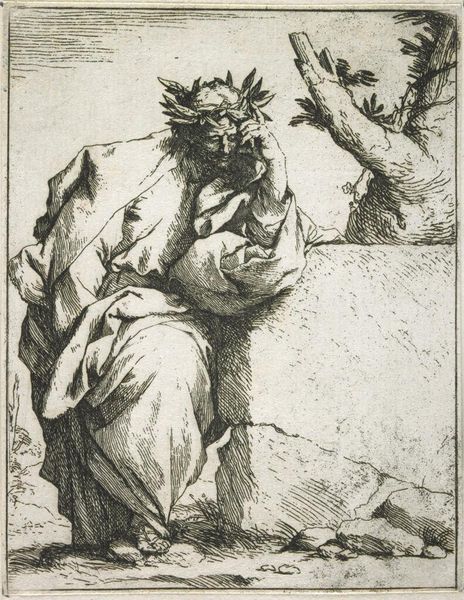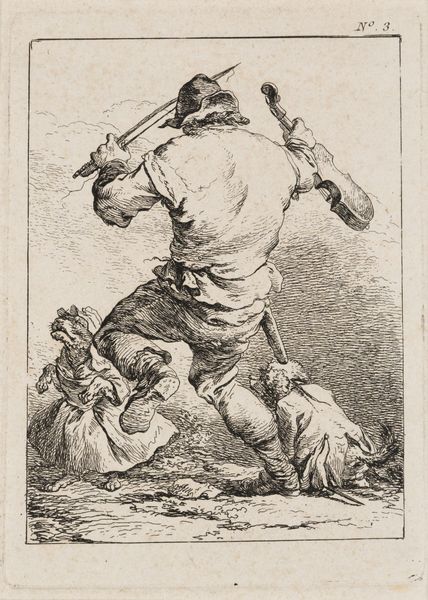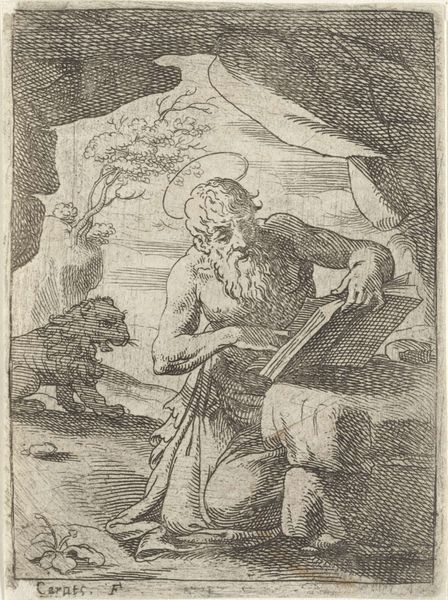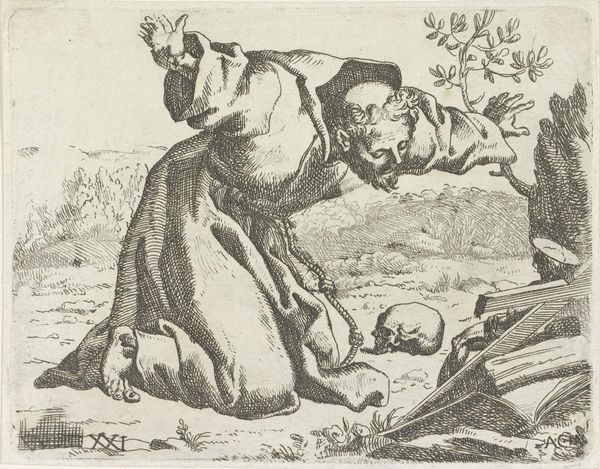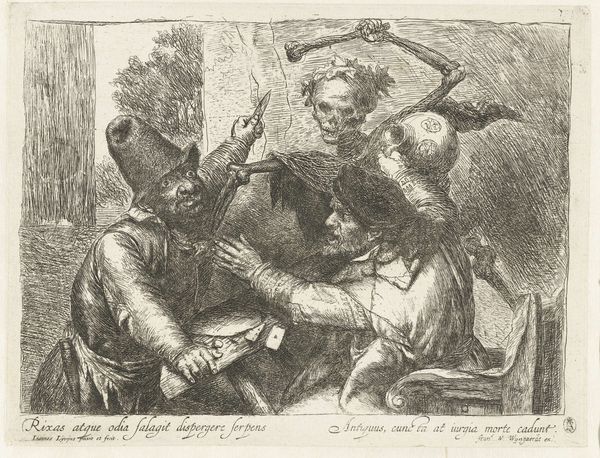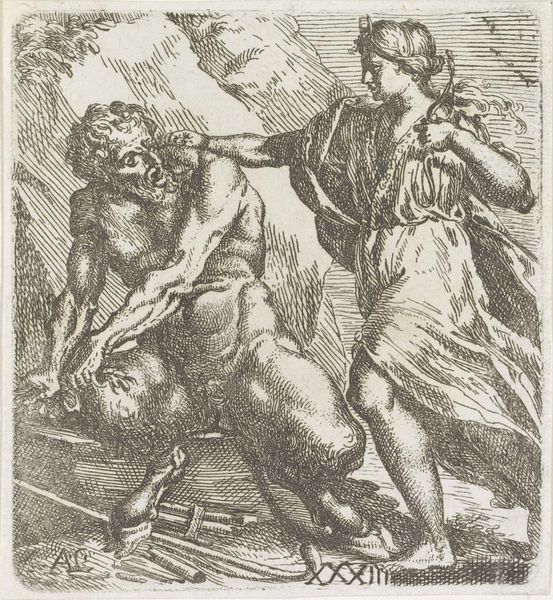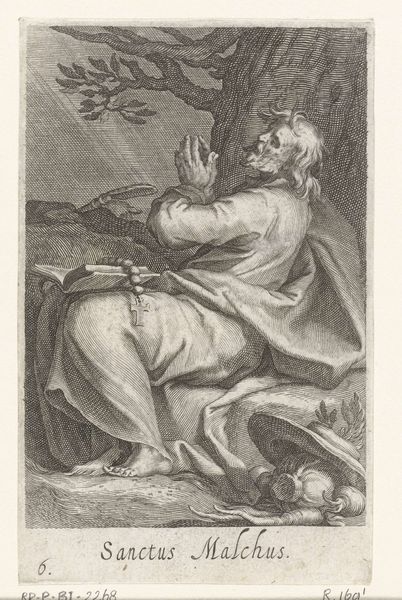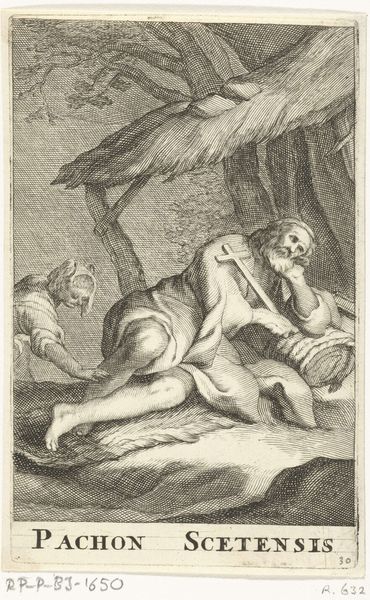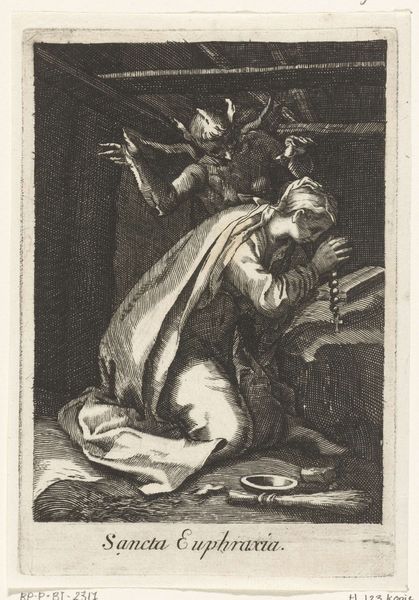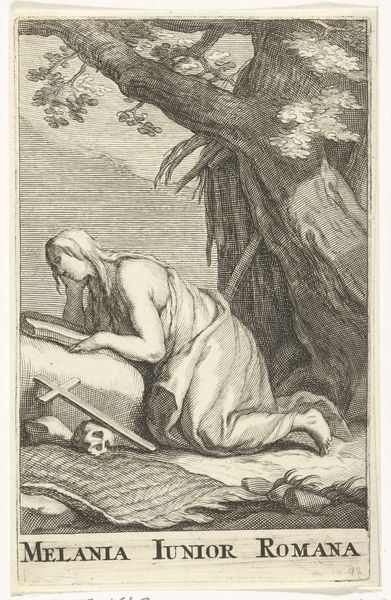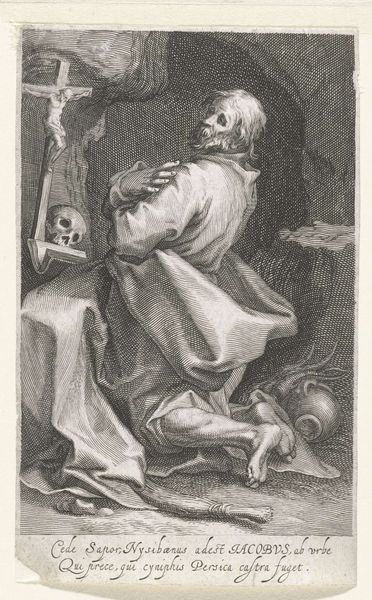
Dimensions: height 164 mm, width 108 mm
Copyright: Rijks Museum: Open Domain
Curator: The engraving before us, likely from the late 18th century, is titled "Evangelist Lucas met os" by Giovanni Battista Tiepolo. My first impression is that it has a contemplative and weighty quality; is it just me? Editor: Contemplative, yes, I agree. The texture created by the lines of the engraving certainly contribute to a weighty impression. The density speaks volumes! Curator: Well, let's unpack that. Luke is shown in the act of writing. We see the Ox of St. Luke depicted, a significant visual metaphor for sacrifice and service that runs throughout the gospel itself. In Jungian terms, we may read that, perhaps, this speaks of the laboriousness, both earthly and spiritual, to be a messenger for change. Editor: Ah, I see that, indeed, it has to do with the role assigned to Luke in patriarchal religion, often forcing a man to suppress or relinquish himself as a sort of tribute to divinity and dogma, isn't it? Luke's association with compassion can also been read here, perhaps. It could invite viewers to meditate on empathy and their ethical obligations toward one another, especially in societies divided by difference. Curator: It is curious to examine this artistic portrayal in its historic setting when there was the rise of humanist thinking, so these archetypes were still dominant and played a very significant symbolic role in that period's religious views and moral framework, as opposed to this era. Tiepolo has indeed a signature mark in such imagery. Editor: Precisely. Considering Tiepolo worked within a specific socio-political framework, it’s fascinating to ponder how his choice to showcase the servitude element of religious service, whether consciously or unconsciously, reflects or questions the power dynamics of his time. It asks of the viewers an interpretative engagement. Curator: It highlights, doesn't it, the continuing influence of deeply held cultural narratives and archetypes, and how they permeate even personalized renderings. It truly showcases the confluence of historic symbolic traditions as they transition through new periods. Editor: Yes. This engagement prompts discussions about interpretation and challenges established concepts of identity, commitment, and the part they play within religion, as the old fades and something new must grow out of the decay. Curator: Looking closer, it serves to highlight the enduring impact of deeply established cultural conventions and archetypes on representations through new ages. This engagement prompts discussions about the roles assigned, their influence, and whether their contemporary expression really holds up. Editor: True that. All in all, these are just entry points, though. It’s clear that engagement with any piece of art needs ongoing conversation if it is to matter today.
Comments
No comments
Be the first to comment and join the conversation on the ultimate creative platform.
